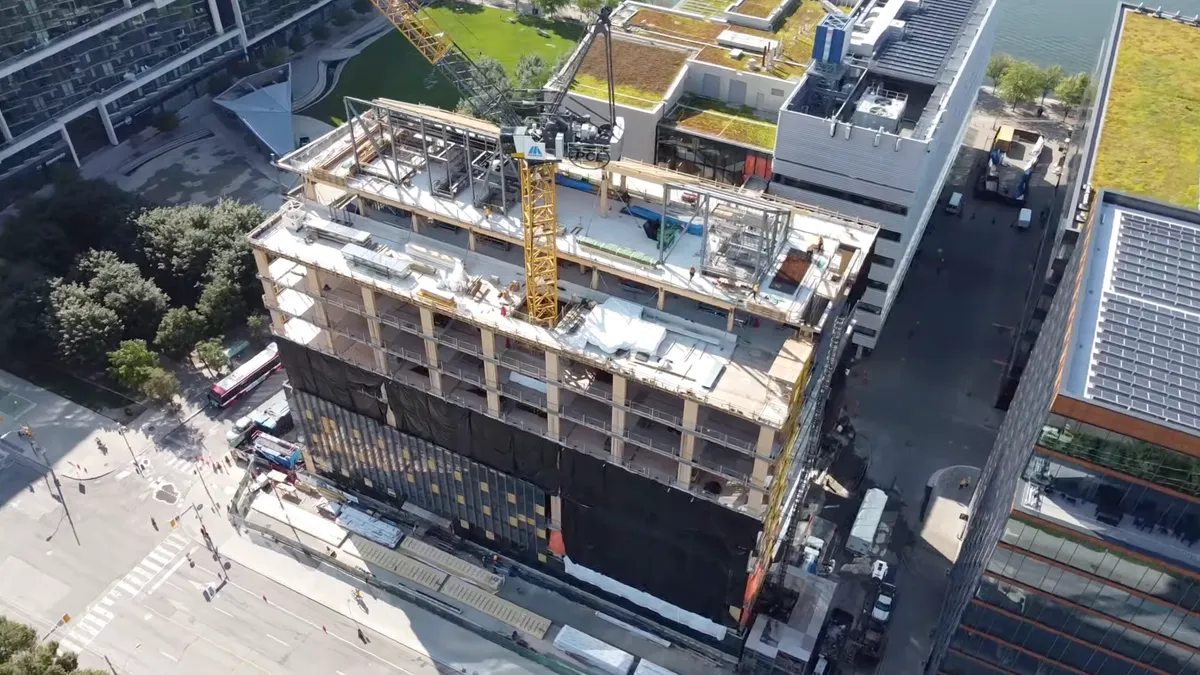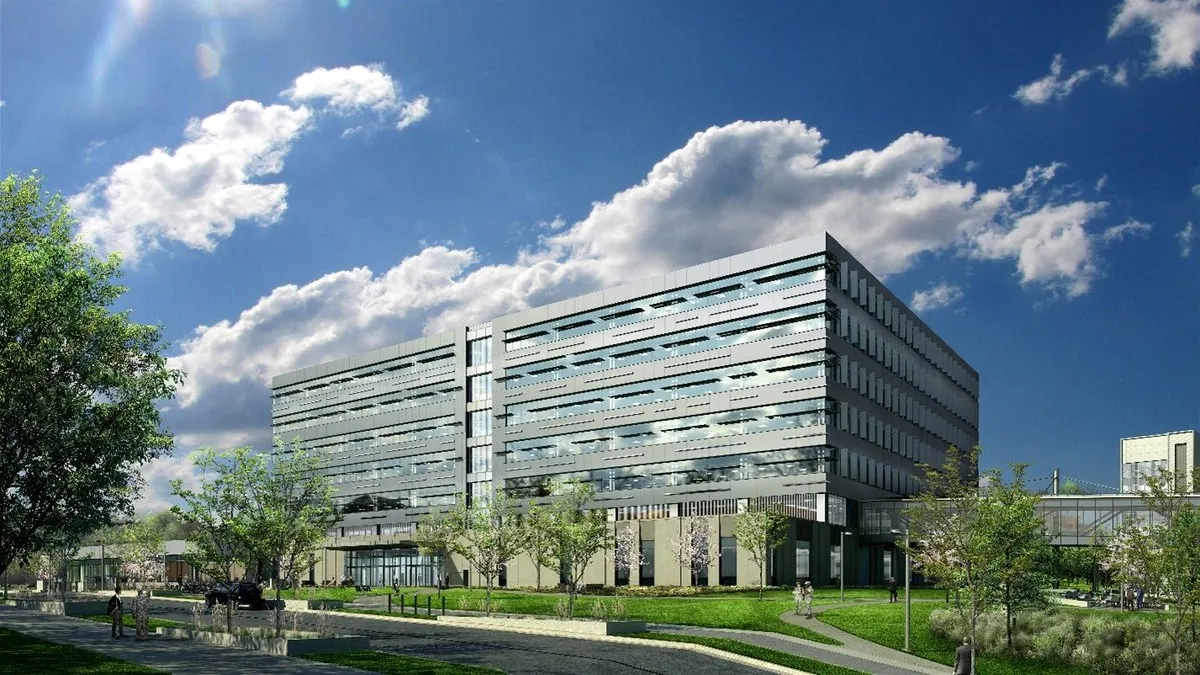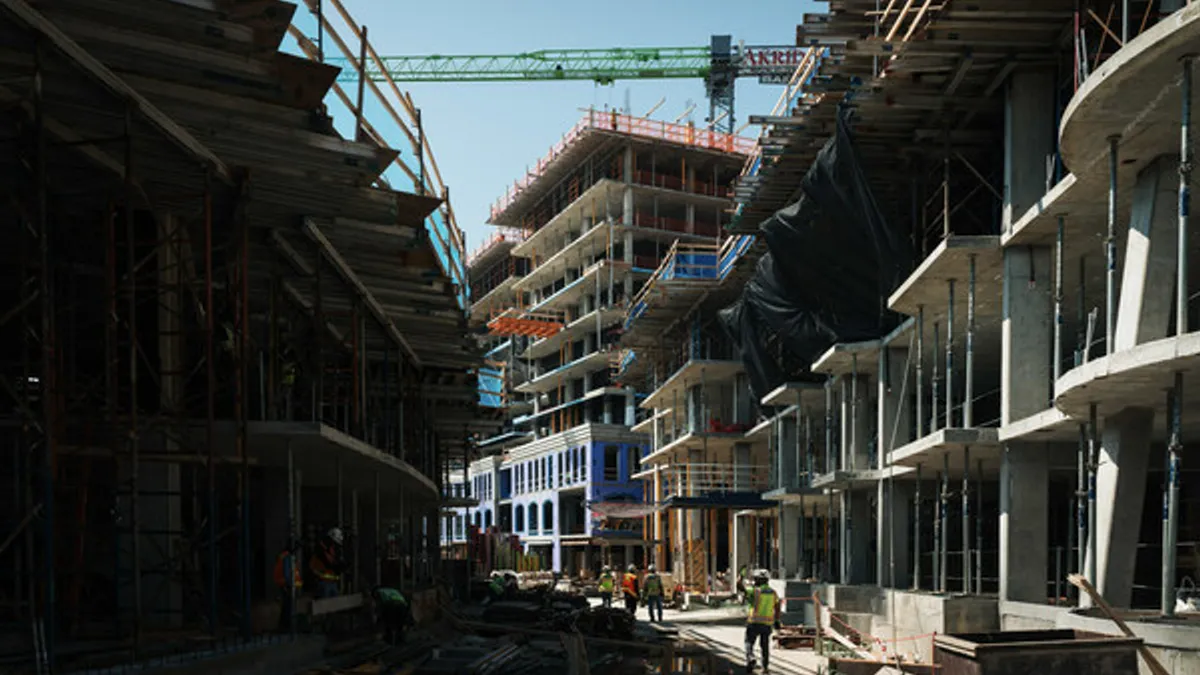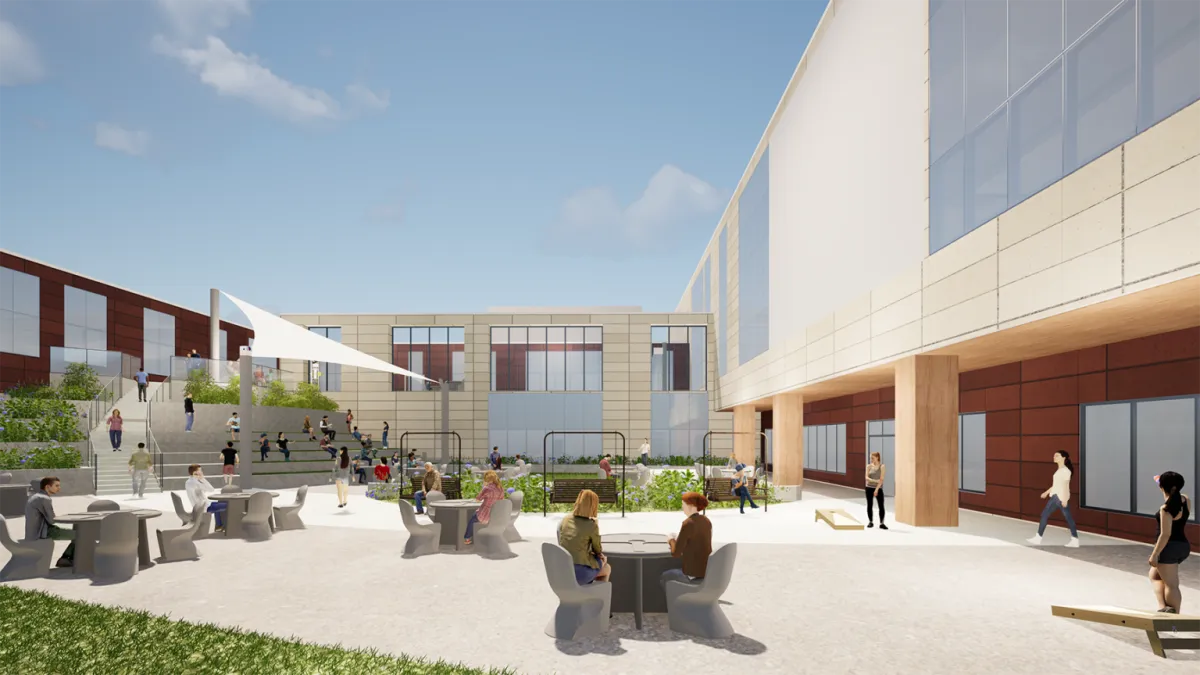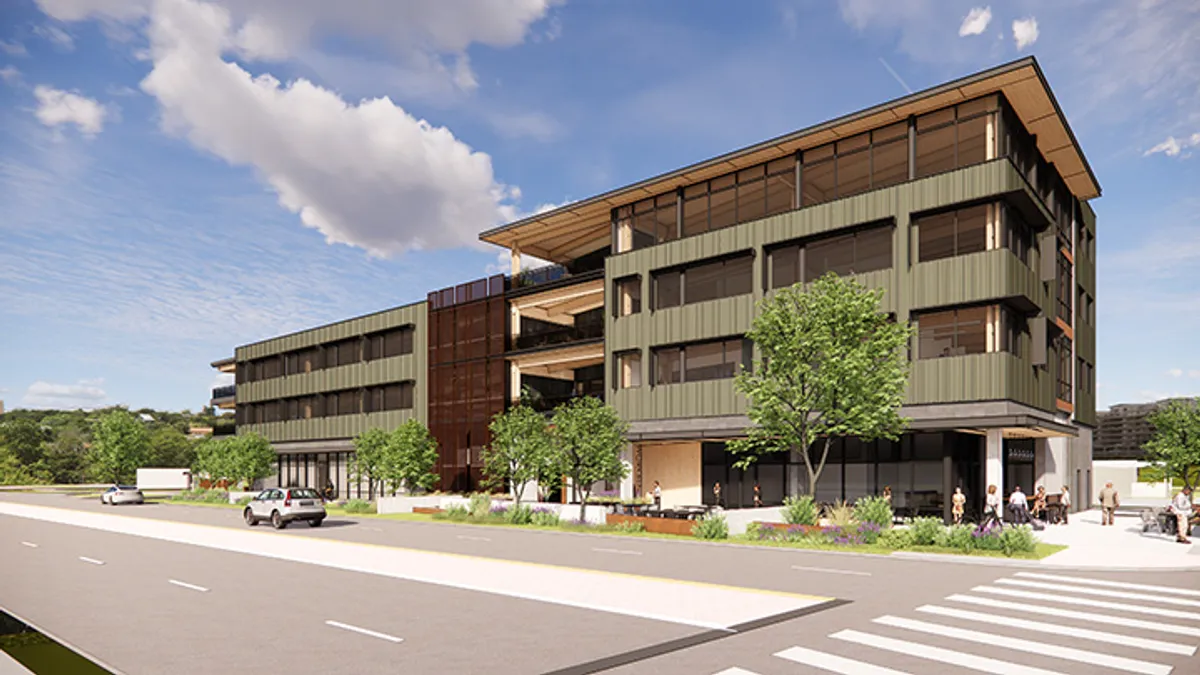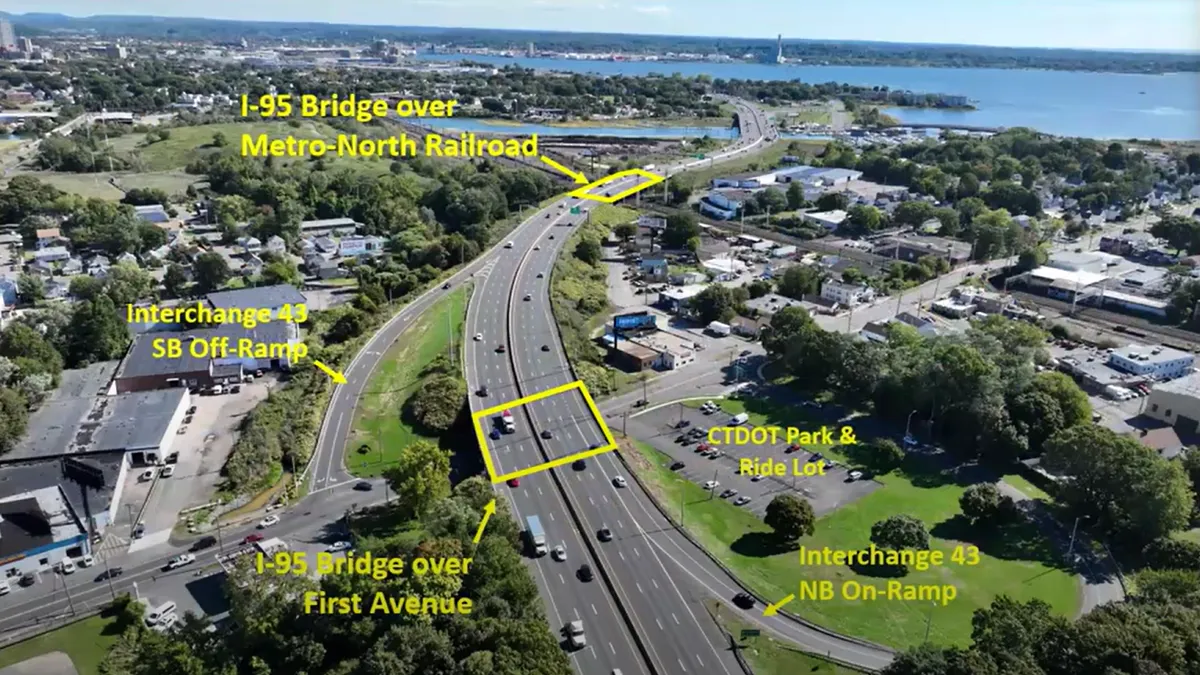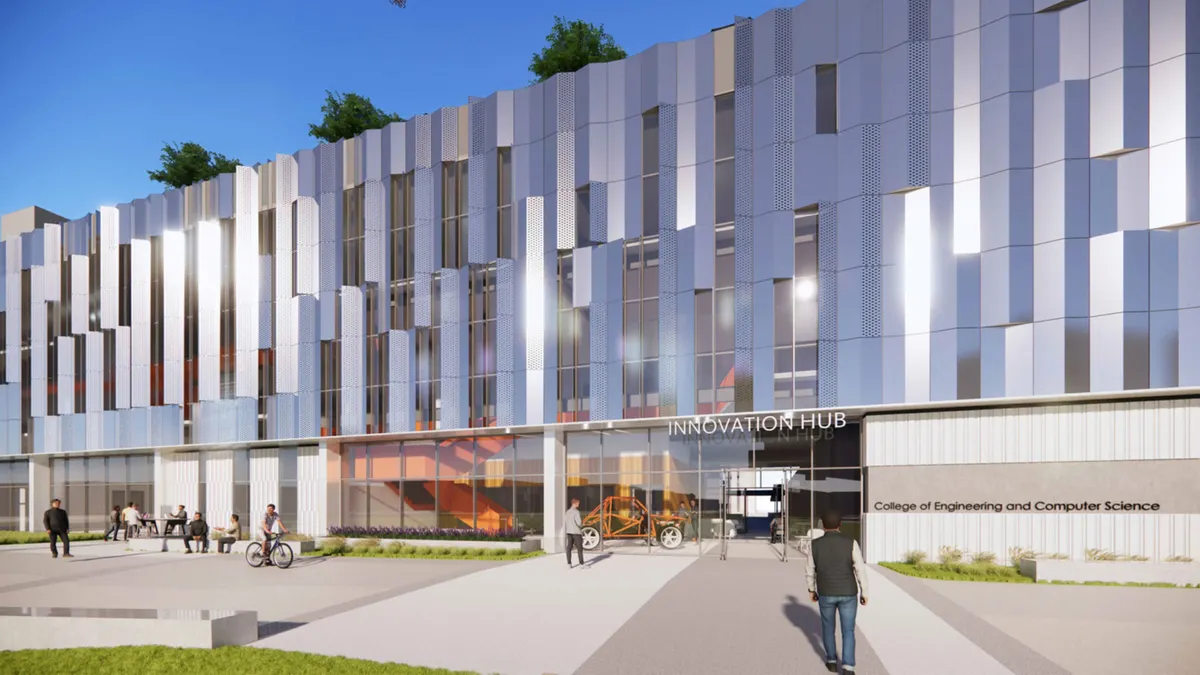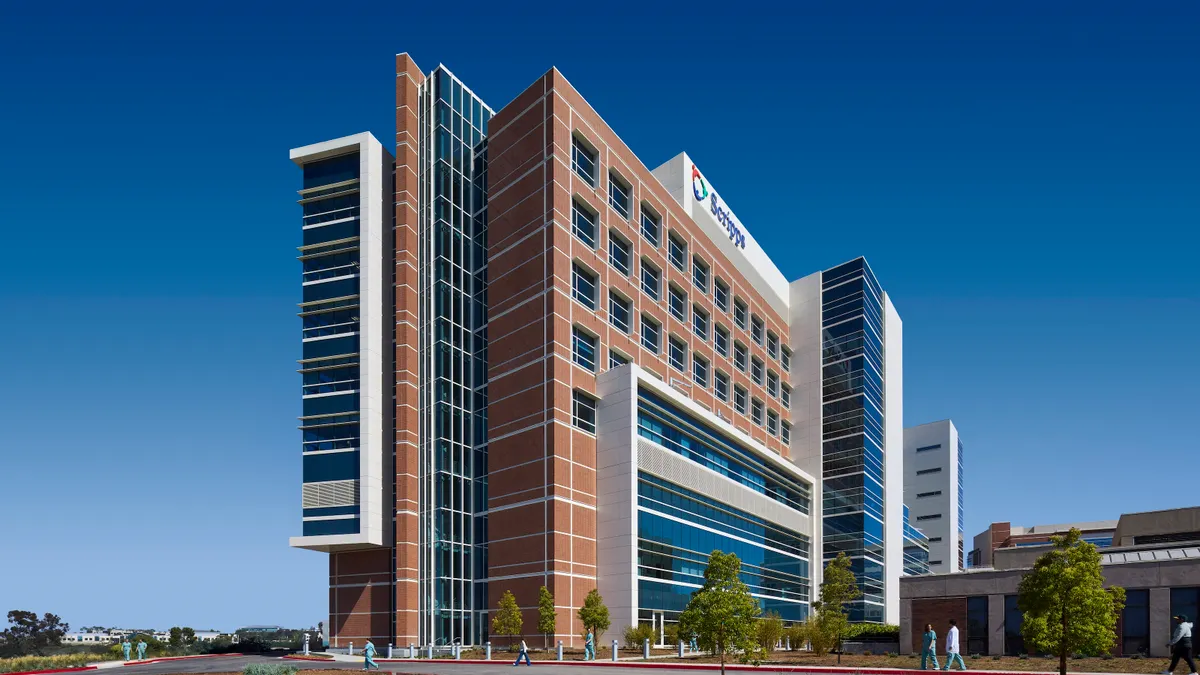Edmonton, Alberta-based PCL topped off Ontario’s first mass timber, net-zero carbon emissions institutional building, the contractor announced Aug. 21. It is reportedly worth $150 million, according to Woodworks Innovation Network.
The 10-story facility, known as Limberlost Place, is located at George Brown College’s Waterfront campus in Toronto. Now that the building is topped off, PCL will focus on completing the exterior envelope and starting the interior fit-up, which will include installing other mass timber pieces and commissioning the building, per the release.
Limberlost Place’s structure consists of mass timber components and a structural steel core, according to the firm. A total of 139 cross-laminated timber and concrete composite slab bands were prefabricated at an off-site facility and shipped to the site for final installation.
The building is made of approximately 1,190 pieces of cross-laminated timber and 571 glue-laminated mass timber components. The cross-laminated timber members were prepared with kerf plates, screws, rebar, concrete, M&E sleeves, roof anchors and column bases.
The structure will use 5,850 cubic meters of concrete and includes over 22,306 unique steel components.
“Limberlost Place is a complex project to oversee because of how far its design is pushing the boundaries in advancing current sustainable building practices,” said Gervan Fearon, president of George Brown College, in the release.
The project was designed by Vancouver, British Columbia-based Acton Ostry Architects and Toronto-based Moriyama Teshima Architects. It was the 2023 Jury Winner of architecture website Architizer’s Awards in the Unbuilt Sustainable Non-Residential Project category, according to Moriyama Teshima Architects.
The use of mass timber in commercial construction has been gaining momentum across North America. Last winter, San Francisco-based builder Webcor launched a new division, Webcor Timber, with a focus on the sector.
In addition, Sweden-based contractor Skanska hired its first mass timber and prefab lead in March, and broke ground on Cincinnati’s first ever building made of the material, Cincinnati Public Radio’s new headquarters, on Aug. 22.



